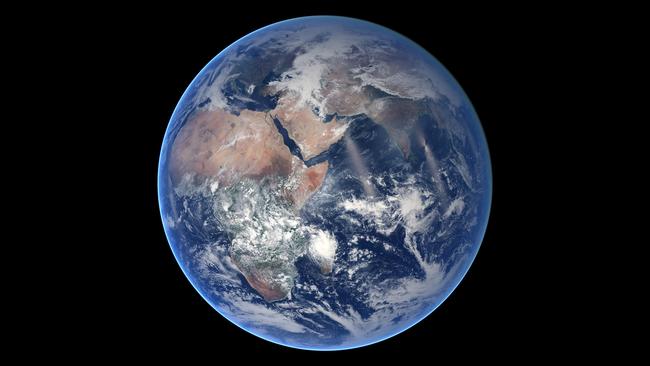
The UN regularly publishes projections of the world population to 2100 and, tucked away in the UN’s World Population Prospects 2022, something caught my eye. It’s not the fact that the latest 2100 outlook revises previous projections of close to 11 billion down to a figure closer to 10 billion. Or that the immediate outlook for Russia, China, Japan and others is for contraction, especially of those in the working (and peak taxpaying) stage of the life cycle. I expected the 78-year outlook for Australia would be for a population of about 38 million; we’re one of a few developed nations, including the US and Canada, likely to be still growing (due to immigration) at the end of the century.
What intrigued me most was the idea that the UN foresees a concept of “peak humanity” (my term) being reached in 2086 at 10.4 billion and gently subsiding thereafter. The global population outlook to 2100 resembles a bell curve with the right hand side chopped off.
The reason for the decline isn’t war, pestilence, famine or disease but depopulation driven by reduced fertility. China’s one-child policy initiated 42 years ago has thinned the ranks of today’s young workers. In Russia there’s simply not the confidence in the future to reproduce at a level above replacement. Fertility levels have also dropped (from a high base) in places like Mexico, Nigeria and the Democratic Republic of the Congo.
If peak humanity is sitting just beyond the horizon in the 2080s, it will be a very different world next century. Contracting populations will create a sustainable world where less, not more, is consumed every year. The projections have implications for the 2020s and beyond.
Powerful cultural shifts since the introduction of the contraceptive pill in the 1960s have changed the trajectory of human life. Global fertility dropped in the 1970s and continued to fall, delivering more spending per capita to the household (more often with a working mum and fewer kids). But ultimately the trend has caught up with countries such as China and Japan, where an absence of kids has evolved into a diminution of workers a generation later. Australia, in contrast, augments its worker population via immigration.
The past 50 years have delivered a culture based on corporate expansion, rising tax pools and ever-increasing spending. But over the next 60 years as we approach peak humanity the growth curve will slow, crest and subside into the next century. The entire logic of cities, corporations and economies changes. Out with endless growth and consumption; in with new ideas such as agile management, the pursuit of productivity gains and the servicing of niche and nuanced markets.
On the leeward side of “peak humanity” there will be another shift as we adapt to shrinking cities, to managing excess capacity and finding meaningful work in a digitised world where markets, workforces and tax bases contract. The driving force behind this long-term trajectory is the unstoppable desire for self-determination – control over our freedoms, fertility and the right to pursue life on our terms. The process ultimately delivers better sustainability but it also demands agility and adaptation across generations. And hasn’t that always been humanity’s greatest skill?




It’s humanity’s biggest question. What will the world look like at the end of the 21st century? By 2100, the global population will be 10 billion. When Paul Ehrlich wrote The Population Bomb in 1968, predicting widespread calamity due to food shortages, the population was 3 billion. Today it is 8 billion.